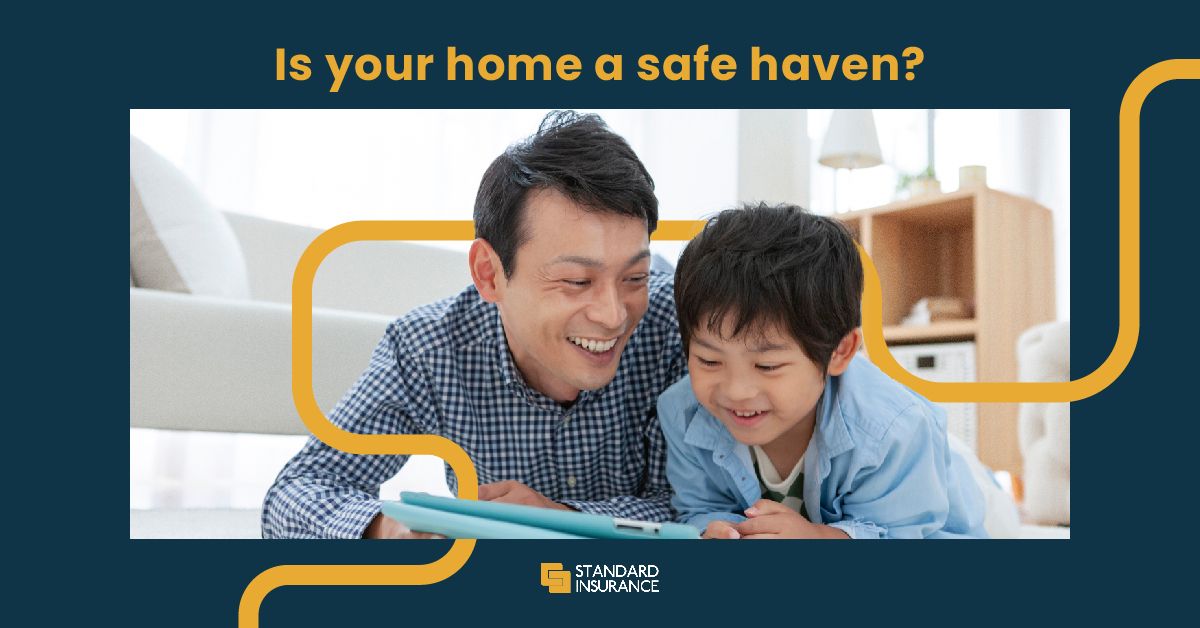Is your home a safe haven?

I spend most of my days at home. As a Work-from-home (WFH) mom, my day starts preparing for work (yes, I put on office clothes to condition my mind that I am at work), then I hit the computer for zoom meetings, emails or whisk away to meet my targets. I feel safe and secure at home. But should I, really? Or am I oblivious to the risks I face day-in, day-out?
Let us start with the kids studying from home. We set them up in our guest room and converted the same as their new classroom. Their dad provided individual extension cords with multiple sockets to accommodate the computers, phone chargers and other gadgets of each child. We believe that one extension cord per child is safe, not to mention it reduces the friction of having to agree who plugs in their unit first. Are they really safe in this set-up?
We asked a professional electrical engineer who pointed out the following risks:
1. Electrical loading of the wall sockets – the electrical wires installed in our home may not be intended for the volume of electricity now being used. This overload may one day be the source of fire.
2. Manner of use – are the computers and other gadgets plugged off when the batteries are full? Overcharging of batteries may cause them to burst, resulting in a bad accident.
3. Condition of the gadgets – let’s point to the fact that we have been using these gadgets on a continuous basis for the past 2 years we have been staying at home. What is their condition? Do the batteries need change? Does the unit need change?
When my husband and I started evaluating these things, we turned our eyes toward other things that may potentially cause an accident at home. With hospitals full of Omicron-infected patients, the last thing we want is an accident that requires hospitalization.
Here are some things we listed:
1) Falling objects
Our children are young and when they start moving around, there is just no guarantee they won’t knock down something that may hurt them. So, we started trailing electrical leads, edges they might cause a trip and even things they might accidentally pull towards themselves.
2) Trips and Falls
When our kids play, they trip and fall all over. Most of the time, that’s not dangerous. But when they hit their grandparent, the fall may need more than soothing words to fix. So, we watch out for anything that may cause someone to trip (extended furniture leg, for instance). And we watch out for someone who falls who eventually get drowsy or lose their consciousness.
Anything beyond ordinary is a trip to the hospital so we made sure we have an accident insurance coverage that may cover things like these.
3) Sprains
A fall that leads to a sprain will need special attention. Sprains normally happen when a ligament, which connects parts of a joint, is stretched, twisted or torn. Knees, ankles and wrists are the most common parts of the body affected. If this occurs, we apply an ice pack, rest the affected area and give it time to heal. A first aid kit that contains all necessities for emergency care is something we keep at home at all times. But when there is evidence of broken bones, that means a visit to the hospital.
4) Cuts
The number one rule we have at home is “keep all sharp objects away from the kids”. But that is no guarantee we will not have cuts. Paper cuts occur when kids play with stationery items. Knife cuts happen while working in the kitchen. Bleeding from small cuts can be stopped by applying pressure to the affected area and then applying antiseptic to avoid infection. The cut will heal itself and if it is small enough, it may not even need a gauze cover. But when the bleeding does not stop, you need to go to the hospital ER for stitches.
5) Burns
Occasionally, we will get minor burns from handling hot items out of the oven or cooking from the stove. These minor burns need first aid attention like putting the affected area under cold running water for a few minutes and if necessary, applying burn ointment to help it heal.
But children play with matches or sometimes misuse objects that need electric power to run it. When they do, they may suffer from a serious burn. When this happens, we give first aid attention as necessary then assess the situation. If emergency hospitalization is needed, we bring the family member to the hospital for emergency care.
After all is said and done, we should never forget the advice to “keep matches and electrical objects from the reach of kids”.
6) Glass-related injuries
We have a vision-challenged child who keeps bumping himself on the glass door that leads to our garden. We tried installing stickers so he can see that he is about to approach the glass door. Because of his condition, it still does not work. We worry he might bump it strong enough one of these days that the glass door shatter and hurt him. Seriously, we should have considered another material for this door before it was constructed. We are now looking at replacing the door altogether because it does not seem likely our child’s vision will improve soon.
7) Drowning
Young children can drown in very shallow water, so we make sure our children are supervised at all times. When they are taking baths, when they are near our garden pond or when they play with any water feature, we keep our eyes wide open for accidents.
We listed other things that totally scared us like assault while at home. By the time we ended, we said we do not want to be mistakenly diagnosed as people suffering from Dystychiphobia, the Fear of Accidents so we ended our list here.
We usually think of HMO cards as the go-to coverage for the hospitalizations I mentioned in this article. But when HMO coverages are beyond financial reach, accident insurance that covers hospitalization for accident-related injuries does the job as well. What it will not cover are hospitalizations due to illness so this is where you will need a good HMO family coverage.
Accidents can happen at home anytime so it pays to be prepared. One way we can all prepare is by making sure our families are covered with an accident insurance plan. Check out Family Protect at https://www.standard-insurance.com/products.html#/packaged-products/8
